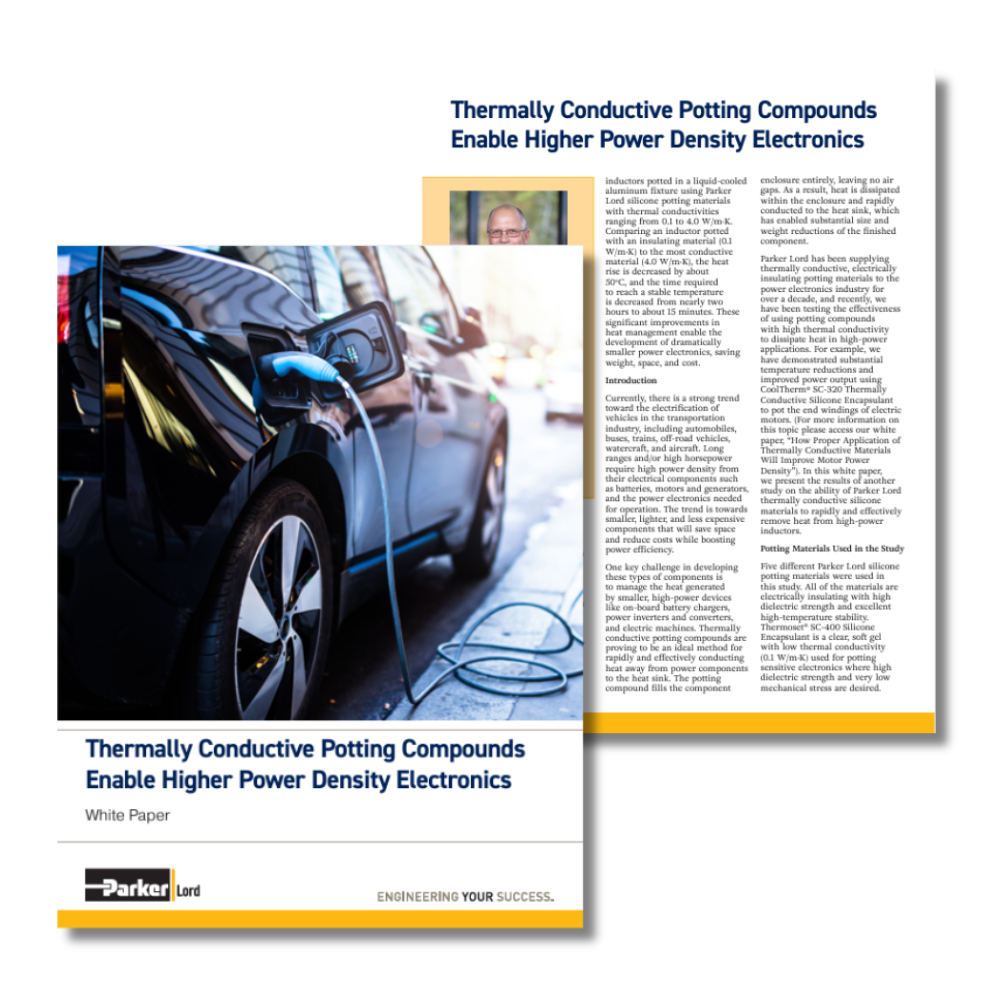FREE WHITEPAPER
Thermally Conductive Potting Compounds Enable High Power Density Electronics
What You'll Learn
Download Whitepaper
- How thermal management is crucial to heat management in high power density electronics
- Testing and comparison of viscosity and thermal conductivity among different potting solutions
- How heat dissipation can increase component lifetime
- Benefits of potting for power electronics in electric vehicle applications
Additional Info
A key challenge in developing higher power density electronics for electric vehicles and other applications is to manage the heat generated by smaller, high-power devices, such as on-board battery chargers, power inverters and converters, and electric machines. Thermally conductive potting compounds are ideal for rapidly and effectively conducting heat away from power components to the heat sink.
In this study, we examine the heat rise of inductors potted in a liquid-cooled aluminum fixture using Parker Lord silicone potting materials with thermal conductivities ranging from 0.1 to 4.0 W/m∙K. Comparing an inductor potted with an insulating material (0.1 W/m∙K) to the most conductive material (4.0 W/m∙K), the heat rise is decreased by about 50°C, and the time required to reach a stable temperature is decreased from nearly two hours to about 15 minutes. These significant improvements in heat management enable the development of dramatically smaller power electronics, saving weight, space, and cost.


